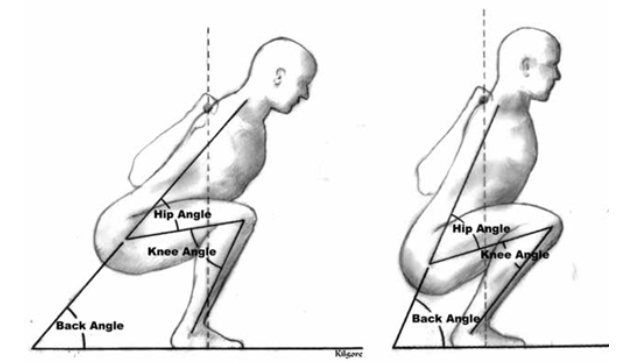Low Bar or High Bar Squat
Low Bar or High Bar? Big big question that a lot of people starting off Powerlifting often ask. What's the difference? Which one should I be doing to maximise my squat? Without further adieu, lets get into it!
What is a High Bar Squat?
Firstly to start off for those who don’t know the difference, the High Bar Squat is a standard back squat where the bar sits on top of the trapezius muscle and is usually performed as a knee dominant movement. This is the traditional version of the squat that is mostly taught to beginners when first starting off. The High Bar Squat is often used in olympic weight lifting but the technique has a slight variance in which we try to maintain an upright torso position to load the knees more adequately, making it more applicable to the Snatch or Clean and Jerk.
What is a Low Bar Squat?
A Low Bar Squat is a squat where the bar sits slightly lower than the upper trapezius and actually on the rear delt. The bar sitting slightly lower will naturally cause a more forward tilt of the torso making it a more posterior loaded squat. Still being performed as a knee dominant movement however the glutes, hamstrings and erectors are engaged more due to the torso being more leant forward. The Low Bar Squat is used by many Powerlifters as it allows them to use more of their posterior chain which in turn can increase overall load lifted. The technique however places more emphasis on the lower back, elbows and wrist and stresses the nervous system much more due to the position it places the body in.
Which one should you use?
Both versions are used in different context and it should really depend on your goal and how well you can use each to their best extent. The High Bar Squat should be used for more athletic development as the quadricep muscles are more prominent in certain sports such as Sprinting (initial drive phase), Jumping or Tackling. Loading the anterior compartments of the lower body has been shown to have higher application to sport specific movement patterns. However because the lever or moment arm created by the upright torso position, it makes it slightly harder for many individuals (NOT ALL) to shift overall load which could also hinder progress for athletic development as load is king and we want to try to create the most force against external resistance. The Low Bar Squat, usually having less carry over to athletic sport has its time and place but should not be prioritised as much due to the demand it has on the lower back, wrist and elbows which can make it harder to train other exercises by over stimulating the joints or nervous system. For shifting overall load though in Powerlifting, it could be beneficial as that is the outcome of the sport, to move as much weight as possible for a 1 rep max.
We also need to realise that leverages and preferences, a person with severely long limbs will have a greater moment arm from their centre of gravity which does not give them the best leverage to move overall load. For example if I have really long legs, squatting High Bar might be more difficult as I’d still be leant over and using Low Bar could make it easier for me to shift the weight due to similar loading positions. The opposite is said if I have really short legs and prefer to stay upright. Another example is an extremely quad dominant individual who would most likely prefer High Bar Squats compared to a more posterior chain movement like Low Bar Squats.
Stressors
As mentioned above, we have to consider overall stress. The Low Bar Squat has a higher demand for mobility and overall stimulus on the nervous system, making it harder to train as frequently or with other movements such as Deadlifts and Bench Press. If managed well, the Low Bar Squat can help you move more weight and be better for competition. The High Bar Squat can be trained more frequently and like we always mention, practice is key so training the squat more can again help you have a stronger squat. This also allows you to train other movements more often making it easier to progress overall. For myself personally, being a Powerlifting and Olympic Weightlifter I train both. For the majority of the year I train High Bar Squats which allows me to Snatch and Clean more often while working on my Bench Press as my Bench is quite shit. Closer to a Powerlifting meet I’d then swap over to Low Bar Squats for specificity and reduce overall volume on other exercises. For BJJ I use both to train all levers as a lot of funky shit can happen in BJJ and there are really no optimal positions you can be in especially No Gi, which is so fast paced. For Rugby or Track and Field development, I’d stick to High Bar Squats again due to the demand and specificity of the sports.
I hope this article helps you decide which technique to utilise in your training and ultimately which one you prefer.
Peace out Movement Fam!
Coach Matty

